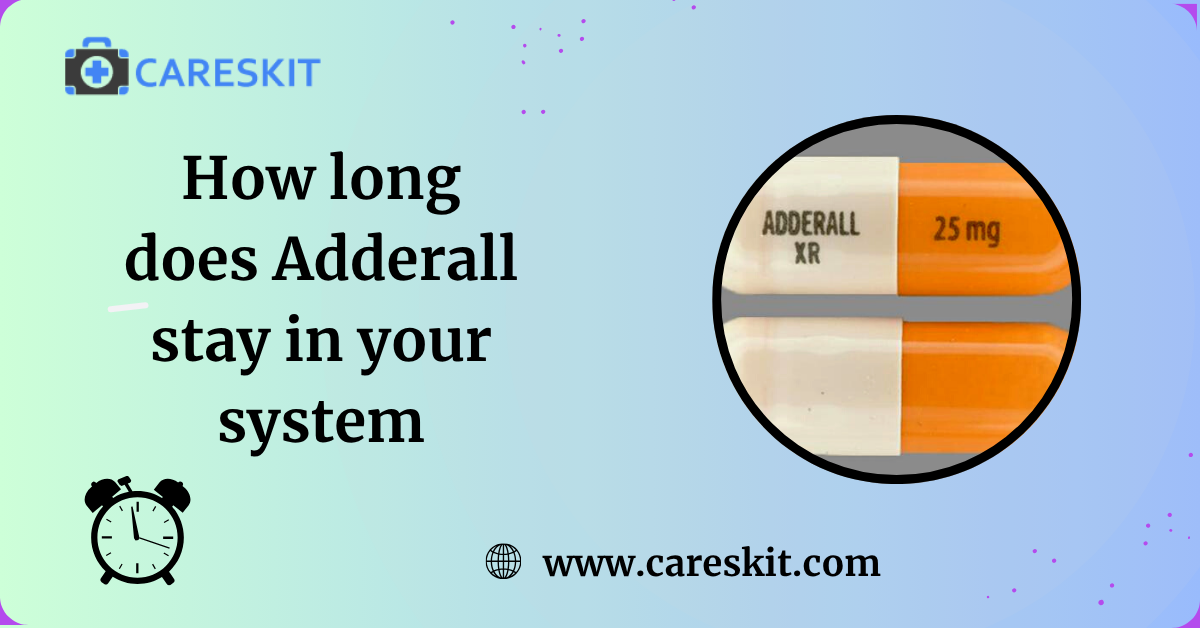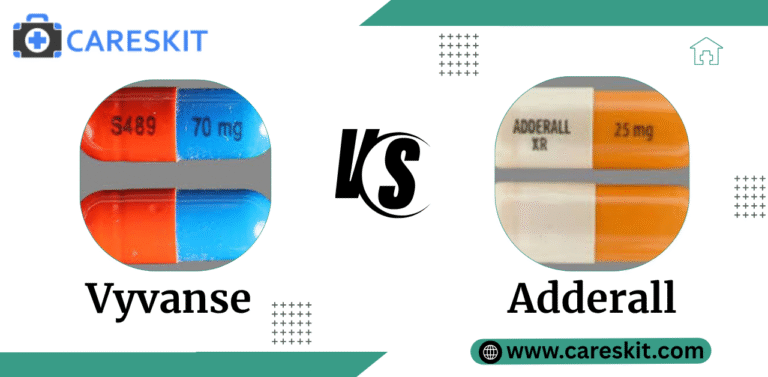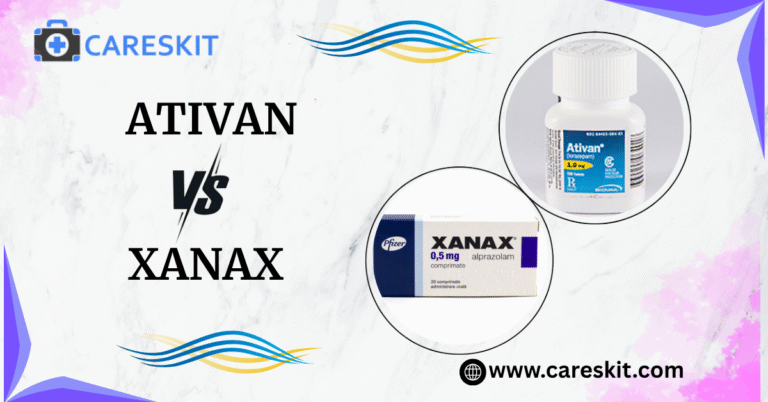How Long Does Adderall Stay in Your System? Urine, Blood, Saliva & Hair Explained
Adderall is a prescription drug used for the treatment of ADHD and sometimes used for narcolepsy. Knowing the presence of Adderall in your body can be detected in various testing methods and time duration. Due to its effectiveness it is important to understand how long Adderall stays in your system, when you can face different drug test methods. If you are worried about different drug testing and how to take medications then consult your healthcare providers for appropriate treatment.
In this blog, we will discuss everything you need to know regarding how long Adderall stays in your system, what factors affect metabolism, and how it can be detected in urine, blood, saliva, and hair drug tests.
Understanding Adderall and Different Drug Test Methods
Understanding Adderall and its different drug test methods are essential for patients and doctors for choosing appropriate medications to reduce ADHD. This drug test method shows Adderall’s effectiveness, how long it lasts in the body and various side effects.
What is Adderall?
Adderall is a combination of amphetamine salts and it is a prescription only drug used for the treatment of AdHD and sometimes sleeping disorders. It is classified under Schedule II controlled substance due to its effectiveness and misuse profile. It produces various side effects so taking it as directed by your healthcare provider and missing a dose or overdose may produce withdrawal symptoms that are incurable.
How Long Does Adderall Stay Active in Your System?
Adderall remains in the system within 2 to 4 days and several factors affect stay including patient health conditions, dose taken, metabolism rate, organ function, and formulation. These drugs contain amphetamine salt and produce potential effects to reduce ADHD. It has a smaller half-life of up to 9 to 14 hours after which it can be eliminated from the body
It is detectable based on some drug tests, detailed below:
- Urine Test: This is the most prevalent drug test. Adderall remains detectable for 4 days in urine, but it may vary.
- Blood Test: Adderall can be detected by a blood test just hours after it is consumed and could potentially be in the body for 1 to 2 days.
- Hair Follicle Test: In a hair follicle test, Adderall remains detectable for 90 days or 3 months from the time of last consumption.
- Saliva Test: It is less intrusive but efficient. A saliva test can differentiate between eating Adderall versus injecting it within minutes and is detectable for up to 2 days.
Factors That Determine How Long Adderall Stays in Your System
The time Adderall remains in your system will be different for each person.Many biological factors can affect how Adderall is stored and eliminated from the body. Understanding these factors are essential to predict how long Adderall remains detectable by different drug test methods.
Dosage and Frequency of Use
A higher dosage or a higher frequency of use or both can cause Adderall to gather in your body and therefore increase the amount of time that is detectable. Chronic use of Adderall may have longer retention times than a one-time or infrequent dose of a lower dosage.
Age and Body Composition
Younger people have a faster metabolism that means drugs will clear from their system faster than older individuals. A higher body fat percentage can increase the retention of drugs as Adderall is not highly fat-soluble.
Liver and Kidney Function
Adderall is an effective medication that is metabolized in the liver and excreted through the kidneys. A person with impaired liver or kidney function may take longer to have blood tests show zero levels of Adderall.
Type of Adderall: IR vs. XR
It should be mentioned that IR won’t remain in the system that long (4 – 6 hours), whereas XR has been metabolized to remain in the system longer (12 hours or more), as mentioned on the label.
How Long Do the Effects of Adderall Last?
The duration of the effect of Adderall depends on the type of formulation may be IR or XR. Adderall IR produces quick relief and starts its work within 4 to 6 hours so most healthcare providers use it for short-term treatment and take it multiple times daily. Adderall XR is designed for long-term treatment and starts its work up to 10 to 12 hours and takes one tablet daily.
IR Formulations
- Onset: 30 to 60 minutes after ingestion
- Peak Effects: 1 to 3 hours
- Duration: 4 to 6 hours
- Use Case: Often taken 1–2 times per day depending on the prescription schedule.
ER Formulations
- Onset: 30 minutes to 1 hour
- Peak Effects: 7 hours
- Time Period: 10 to 12 hour
- Use Case: Usually taken once daily in the morning
Adderall Side Effects
Adderall is a powerful prescription medication and combination of amphetamine salts carries potential risks of side effects. So before you start medication first consult a certified healthcare provider to choose appropriate medication for your health.
Common Side Effects
You can start any ADHD medications it show some common side effects. These are easily treatable by your healthcare provider. Some common side effects are listed below.
- Headache
- Dry mouth
- Nausea
- Nervousness
- Irritability
- Irritability
- Restlessness
Serious Side Effects
Adderall sometimes causes some serious side effects in some individuals. Some of them are listed below:
- High blood pressure
- Irregular heartbeat
- Chest pain
- Aggression
- Paranoia
Drug Interaction
Adderall’s effectiveness can cause a different drug interaction profile. It can interact with different medications, supplements, and food items that leading to potential serious side effects. Understanding these interactions can help patients to safe use and avoid side effects. Some of these are:
FAQs
How long does Adderall remain for a drug test?
Due to Adderall’s effectiveness it can be detected in the body for many days. In the urine test, it can be detected within 2 to 4 days. In the blood test method it shows up within 24 to 48 hours. The saliva test shows up within 1 to 2 days. In the hair test, it is detected for the longest time, up to 90 days.
What factors influence Adderall to stay in the system?
Some essential factors affect Adderall to stay in the body, these are
- Body composition
- Age
- Function of use
- Dosage
- Organ function
- Metabolism
Conclusion
It is important for both patients and doctors to understand how long Adderall stays in the body for safe continuation of treatment. Adderall can be a profound treatment for ADHD and narcolepsy and it is important for you to be aware of its post-use side effects. Most of the doctors prescribed Adderall for ADHD and it is best to take it as directed for the appropriate treatment.





